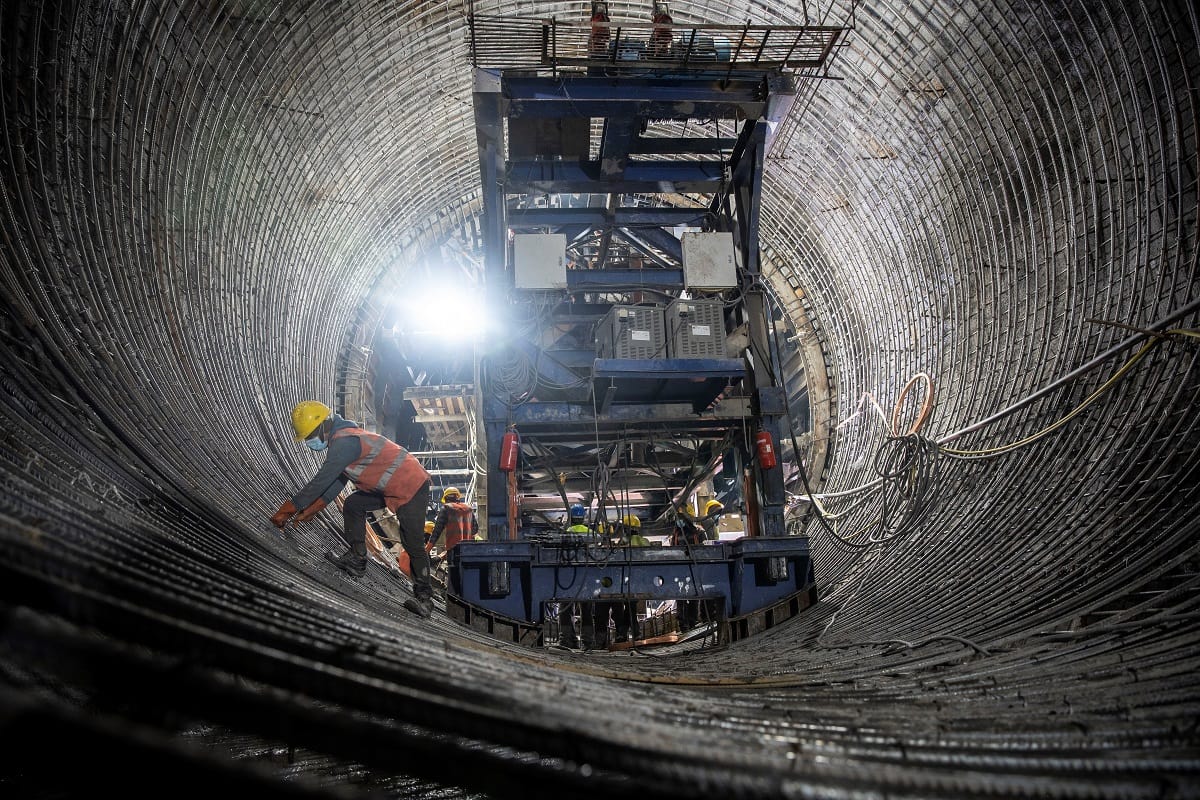India’s recent hosting of leaders from Nepal and Sri Lanka highlights the growing prominence of infrastructure in India’s regional strategy. Elemental geographical realities mean that China will be hard pressed to replicate the more ambitious aspects of India’s regional connectivity agenda.
Fairly or not, Nepal and Sri Lanka have periodically viewed India as an overbearing and interventionist neighbour. Recent India-Nepal relations have been marred by the legacy of India’s 2015 export “blockade” and more recently a furore over a largely avoidable border dispute. The unresolved legacy of the Sri Lankan civil war and a low key dispute over the unoccupied Katchatheevu island, have similarly coloured relations with Sri Lanka.
India has sought to push China from strategic projects while also using regional connectivity to inject ballast into bilateral ties.
As it has done elsewhere in the Maldives and Bangladesh, China has skilfully exploited openings provided by – if not always outright anti-Indian sentiment – the desire of regional capitals to diversify their foreign policies. Mostly under the aegis of the Belt and Road Initiative, infrastructure has been a central element of China’s strategy. Prominent examples include the construction of a port at Hambantota and the building of an airport at the Nepali tourist city of Pokhara.
No longer able to take its regional primacy for granted, India has reacted with growing anxiety. The visit last year of a Chinese “spy ship” to Hambantota Port – which has been leased to a Chinese company for 99 years – despite India’s firm protestations, caused particular neuralgia.
In response, India has sought to push China from strategic projects while also using regional connectivity to inject ballast into bilateral ties. This approach received a fillip from Prime Minister Narendra Modi’s speech to the 2018 Shangri La Dialogue, which highlighted the “vital” role of regional infrastructure. Indian conglomerates, particularly Adani, have also been willing conduits of New Delhi’s outbound push.

This increasingly ambitious strategy was on full display during the respect visits to New Delhi of Nepal Prime Minister Pushpa Kamal Dahal, better known at Prachanda, and Sri Lankan President Ranil Wickremesinghe.
Arriving first in early June, Prachanda secured India’s commitment to allow landlocked Nepal to use India’s internal waterways for trade, as well as the building of two hydropower projects and a petroleum pipeline. Most significantly, India will import 10GW of power from Nepal over the next decade (up from 450MW annually currently) and facilitate further hydro exports to Bangladesh.
There are obvious synergies between Nepal’s huge electricity surplus, trade deficit with India, and India’s rapidly growing energy consumption. Beginning in 2018, India has used its near monopoly on Nepali power purchases to pressure Kathmandu to drop Chinese investors from hydro projects. India’s concomitant vacillation on importing more power from Nepal was consequently a particular irritant in bilateral ties.
Wickremesinghe also returned home with an ambitious connectivity blueprint. Both countries agreed to reprise the long floated idea of building a land bridge, develop port and logistics infrastructure at three major sites, boost air and ferry services, and facilitate energy linkages through an oil pipeline and grid connection.
The politics of free trade in India and indeed elsewhere in South Asia make the prospects of broad-based FTAs remote.
These proposals coming to fruition would allow Sri Lanka to integrate with the sub-regional Bangladesh, Bhutan, India, Nepal (BBIN) grouping. Call it BBIN Plus. BBIN already has a motor vehicle and cargo mobility agreement, while each country has grid connections with India.
Although evidently some way off, realising material volumes of bidirectional energy trade throughout the BBIN plus would be a boon for regional energy security (an issue Sri Lanka has recently struggled with). With India having also successfully leaned on Sri Lanka to remove Chinese developers from renewable projects in the country’s north, the pressure will be on New Delhi to deliver. It’s true that India’s past track-record overseas doesn’t immediately inspire confidence, but the impressive pace of its domestic infrastructure rollout gives reason for optimism.
Pursuing these types of physical infrastructure connections allows India to leverage the obvious but crucial relative advantages afforded by geography. Because China and Bhutan are yet to establish formal bilateral relations, Nepal is the only BBIN country that Beijing could conceivably target with these types of cross-border projects.
For years, there has indeed been talk of Nepal exporting electricity to China, bilateral rail projects and Nepal using Chinese ports for trade. These proposed initiatives undoubtedly had a particular political potency in the years following India’s 2015 blockade.
However, they have been slow to materialise. Take ports for example. For Nepali exporters, access to ports in Kolkata is evidently more economically feasible than using ports on China’s eastern coast.
Infrastructure projects on the Tibetan plateau pose their own, deeper technical and political challenges. China’s recent encroachments into Nepali territory to fence parts of the shared border belies Beijing’s rhetoric on facilitating greater connectivity via Tibet. Concerns may still exist in Beijing about Nepal’s sizeable Tibetan diaspora.
India will probably struggle to outcompete China on a dollar-for-dollar basis, particularly with megaprojects such as the US$14 billion Port City Colombo project still in the pipeline. It has also reasonably been suggested that infrastructure projects alone will not create the type of transformational economic integration effects engendered by ambitious free trade agreements.
Unfortunately, the politics of free trade in India and indeed elsewhere in South Asia make the prospects of broad-based FTAs remote. Given these constraints, leveraging geography to boost flows of people, goods and electricity appears to be a sound and practical strategy for competing with China.
Source : The Interpreter









